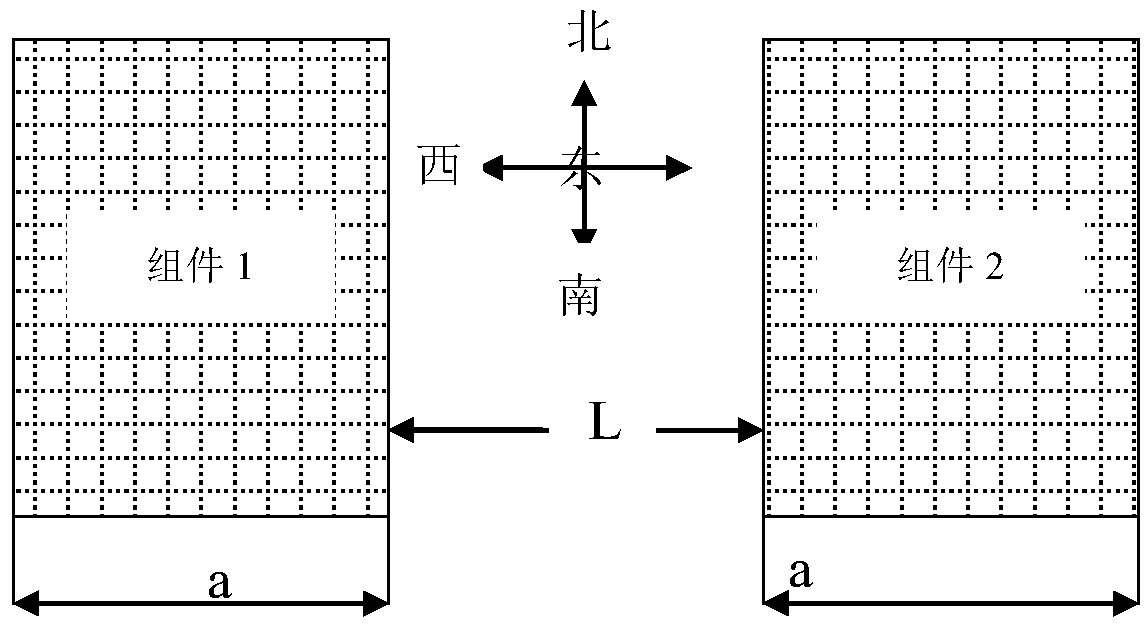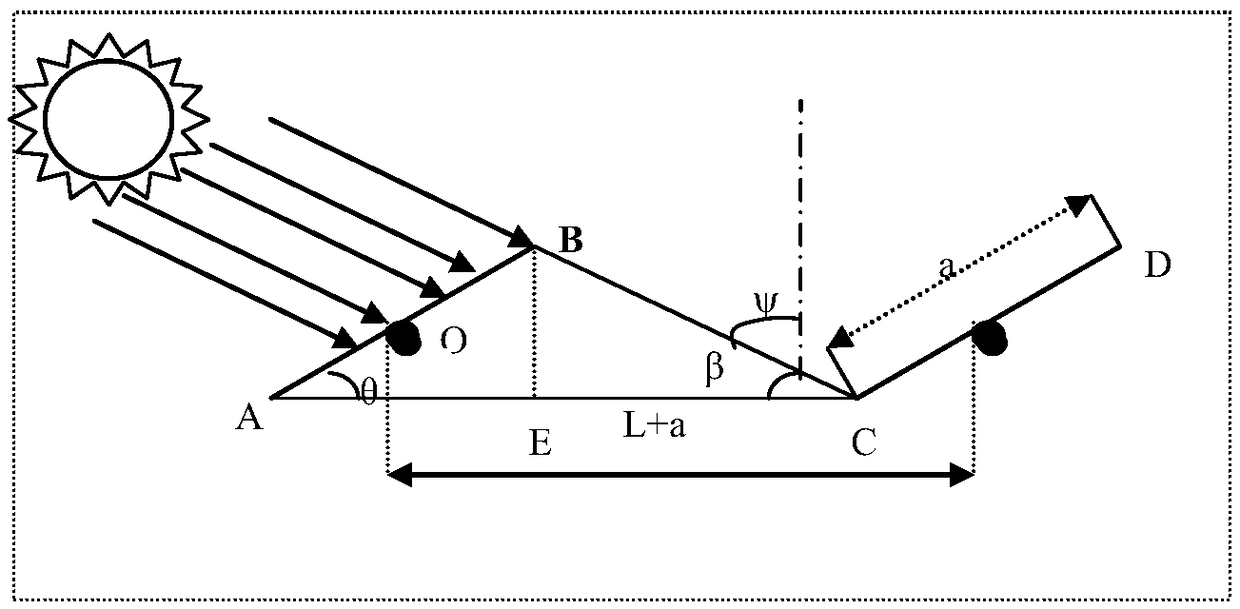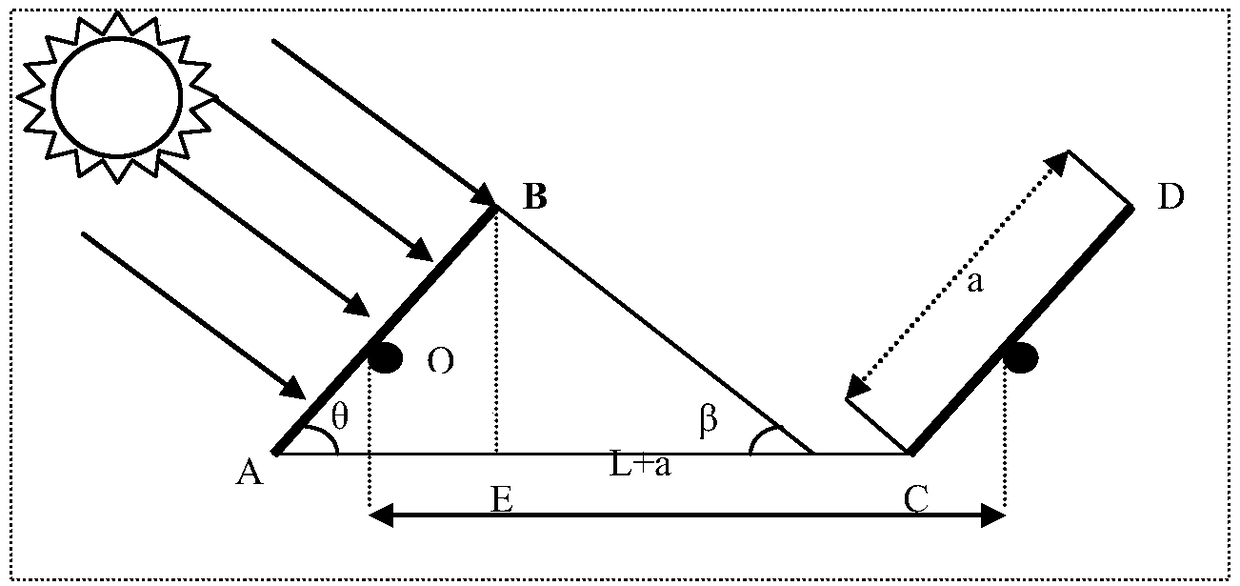A Method for Optimizing the Spacing Between Components of a Photovoltaic Tracking System
A technology for photovoltaic modules and tracking systems, applied in the application field of solar photovoltaic systems, can solve problems such as affecting the effect of sun tracking
- Summary
- Abstract
- Description
- Claims
- Application Information
AI Technical Summary
Problems solved by technology
Method used
Image
Examples
Embodiment Construction
[0059] The present invention will be further described below. The following examples are only used to illustrate the technical solution of the present invention more clearly, but not to limit the protection scope of the present invention.
[0060] The radiation light irradiated on the solar cell module mainly includes direct radiation, scattered radiation and a small amount of reflected radiation, and the system efficiency gain brought about by sun tracking is mainly contributed by direct radiation. The direct radiation intensity of the horizontal ground can be determined by the following formula:
[0061] I b =rI sc cos(h)T r T a T wT o T u (1)
[0062] Among them, I b Indicates the direct irradiance intensity of the horizontal ground, I sc is the short-circuit current of the solar cell, r is the correction factor for the distance between the sun and the earth, h is the altitude angle of the sun, T o is the transmittance of radiation after being absorbed by ozone...
PUM
 Login to View More
Login to View More Abstract
Description
Claims
Application Information
 Login to View More
Login to View More - R&D
- Intellectual Property
- Life Sciences
- Materials
- Tech Scout
- Unparalleled Data Quality
- Higher Quality Content
- 60% Fewer Hallucinations
Browse by: Latest US Patents, China's latest patents, Technical Efficacy Thesaurus, Application Domain, Technology Topic, Popular Technical Reports.
© 2025 PatSnap. All rights reserved.Legal|Privacy policy|Modern Slavery Act Transparency Statement|Sitemap|About US| Contact US: help@patsnap.com



